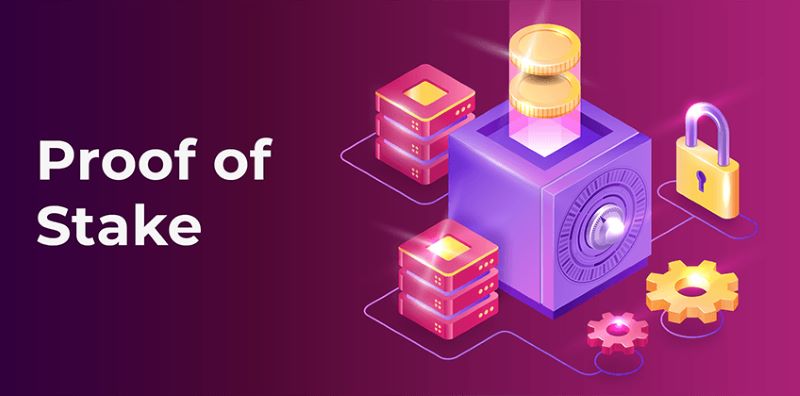Unveiling the Layers: What is Stacking in Crypto and Why It Matters
Dive in as we peel back the curtain on what is stacking in crypto. It’s more than just a trend; it’s reshaping how we think about digital wealth. With coins in your wallet, you could unlock a steady flow of rewards. Imagine you’re planting seeds but in the digital world, growing a garden of gains. Stacking is a vital player on the field of crypto, a fresh take on earning from your stash of digital coins. Stick around, and I’ll show you how this simple strategy both lifts your earnings and fuels the blockchain. We won’t just scratch the surface; we’ll get right to the core of stacking, its role in the bigger picture, and how you can play it to your advantage.
The Fundamentals of Stacking in the Cryptosphere
Understanding Cryptocurrency Staking Mechanisms
In the world of crypto, staking is like earning interest in the bank. When you stake, you lock up your coins to help keep the network secure. In return, you get more coins as a reward. It’s a win-win!
Staking is part of a proof of stake system, which is different from mining. Instead of using lots of computer power to get new coins, you just hold onto some of your coins to prove you have a stake in the network. This way, we all save energy and keep things running smoothly.
To start staking, you need some coins and a place to stake them, like a wallet or a staking pool. Some coins have rules you need to follow and there’s even a minimum amount you might need to have. It’s pretty simple to get going and a great way to earn more from your crypto.
The Role of Proof of Stake in the Staking Ecosystem
Proof of stake is a way for blockchains to make sure everyone agrees without needing big, power-hungry computers. Here’s how it helps:
The proof of stake system chooses validators who get to add new blocks to the blockchain. If you want to be a validator, you have to lock up some of your coins as a stake.
By staking, you’re saying “I promise to follow the rules.” If you do, you’ll get staking rewards. Think of it as earning interest on crypto. If you don’t play by the rules, though, you could lose some of your stake.
Proof of stake keeps the network safe and uses less energy than mining. Since validators are chosen based on how many coins they stake, the more you put in, the more chance you have to be chosen. This makes the network strong and gives you a shot at those sweet staking rewards.
Staking with proof of stake is a big deal. It’s not just about earning rewards, it’s also making sure our crypto world runs right. And the best part? We’re all in it together, keeping the network secure and earning a bit on the side.
Maximizing Returns through Strategic Staking
The Intricacies of Staking Rewards and APY
When you’re into crypto, making your coins work for you is key. Think of cryptocurrency staking as a way to earn more coins — like interest in a bank. It’s simple; you lock up coins you have, and in return, you earn rewards. But how much can you earn? This comes down to the annual percentage yield, or APY. The higher the APY, the more you’ll make. Yet, don’t just look at the big numbers. High APY can come with high risks too.
So, stake smart. Take time to understand what you’re staking in. This means knowing about the coin and the blockchain it runs on. A good rule is to choose well-known coins that lots of people trust. And always check the staking terms. Some stakings might lock up your coins for months. If you can’t wait that long, it’s not for you.
Remember too that staking is not just about what you make but also about helping the network stay safe and run smooth. By staking, you’re part of this. Your coins help make sure transactions are legit and everything stays in order.
Crypto Passive Income: A Practical Guide to Yield Farming
Now, let’s go farming — yield farming! This is another way to earn in crypto but through DeFi, short for Decentralized Finance. Here’s how it works. DeFi platforms let you lend out your coins or provide liquidity. For this, they pay you fees. It’s a great way to earn more coins.
But, like any farming, you need the right tools and knowledge. Start by picking the right platform. Look for ones that are popular and have a good track record. And always read the rules. They’ll tell you how much you need to start and what you can expect in returns.
One last tip: think long-term. Yield farming can change fast, and today’s best deal might not be so great tomorrow. So, pick farms that have been good for a while.
Through both methods — staking and yield farming — you can grow your crypto stack, earn passive income, and support the crypto world. Just be sure to do your homework first. Happy staking and farming!
Mitigating Risks in Crypto Staking
Recognizing and Avoiding Staking Pitfalls
Staking your crypto should feel exciting, like planting a seed and watching it grow. Yet, it can be a bit scary, too. Imagine leaving your bike without a lock. Someone might take it, right? Staking has risks like that, but we can avoid them. For starters, always know the staking minimums. This is the least amount you can stake. Not having enough can stop you from earning rewards. Keep an eye out for staking terms too. They’re like rules you agree to when staking. Break them, and you might face a staking penalty — that’s losing part of your stake. Scary, I know! But don’t fret; keep reading.
Pick places to stake your coins with care. Go for known and trusted staking platforms. This is where you’ll plant your crypto seeds. Choose badly, and your stake might be at risk. No fun at all! And watch for a coin’s lock-up period. That’s how long your coins must stay staked. If you need them back sooner, you might not be able to get them. Not every plant grows overnight, right? The same goes for staking.
Also, understand this term: annual percentage yield (APY). It shows what you might earn in a year, like how much a tree grows in 12 months. Yet, remember, higher APY might mean more risk. It’s like a tree that grows fast but might not last long.
And what about compounding earnings? That’s like your plant making seeds that grow into more plants. Your stake can earn more over time without you doing much else. Sounds cool, right? But always think: the more you earn, the more you could lose. Stay smart.
Employing Cold Staking and Hardware Wallets for Enhanced Security
Cold staking? Think of it like storing your bike in a locked garage — way safer than leaving it outside. It lets you stake your coins while not online, which keeps them safe from hackers. Remember, online wallets are like a bike shed with a flimsy lock. But hardware wallets? They’re tough. They’re like a top-notch bike lock, hard to break. Using one means your stake sits safe and sound.
Got lots of coins? You could be a validator node. That’s a key player in the proof of stake system, helping keep everything running smoothly. It’s a big job, but it helps the whole crypto world stay secure. Still, that means you’ve got to do your part well.
While we’re at it, let’s tackle self-staking and pool delegation. That’s choosing to stake on your own or with a group. Going solo, or self-staking, is like caring for your own garden. Joining a staking pool is like a community garden. Everyone pitches in, so it can be easier.
Lastly, let’s talk strategy. Don’t put all your eggs in one basket. Spread your stakes out. It’s smarter to have many small stakes in different places than one big one. This way, if one doesn’t do so well, the others might still bloom. Plus, think long-term. Staking isn’t about quick wins; it’s about growing steady and strong over time. With these tips in mind, you’ll be on your way to staking success. Keep your crypto safe, your rewards growing, and enjoy the journey. It’s a vast and vibrant garden out there in the staking world. Happy planting!
Innovations and Future Trends in Staking
Staking Pools and Validator Nodes: Evolving for Network Security
Staking pools are groups where coin owners combine their resources. This is done to increase their chances of earning staking rewards. Validator nodes are like the guards of blockchain. They check and approve new data entries. These two work together to keep the network safe. Crypto staking is important for this safety. It’s like a neighborhood watch, but for digital coins.
Validator nodes matter because they make decisions in proof-of-stake systems. Proof of stake lets coin holders be part of managing the blockchain. It’s different from proof of work, which uses a lot of energy. Validator nodes do need a lot of coins to start. Staking pools help those with fewer coins join in. By joining a pool, even if you have a small amount, you can help keep the network safe.
In a staking pool, everyone shares the work and rewards. Think of it as a team sport. You pass the ball to score. Here, everyone’s coins work together to get rewards, like points in a game. But, with more coins together, the pool has a better shot at earning rewards. This makes it good for earning crypto passive income.
Staking can sound complex, but it’s like putting money in a bank to earn interest. When you join a staking pool, you lock up your coins for a while. During this ‘crypto lock-up period’, your coins help the network. In return, you get a cut of the rewards. It’s like earning pocket money by helping out in your community.
The annual percentage yield, or APY, tells you how much you might earn. It’s not a promise, but it gives you an idea. This rate can change, so it’s smart to keep an eye on it. Better safe than sorry, right? Staking is not without risks. The crypto world can be a bit like the wild west. Prices change fast, and rules can be unclear.
Regulatory Considerations: Staking Taxes and Compliance Issues
Let’s talk about staking taxes and rules. You know, the grown-up stuff. When you earn from staking, the taxman wants a piece too. This can be tricky in crypto. You see, each place has different rules about money. Some rules are clear, while others not so much. In the crypto world, we must play by these rules.
Staking rewards count as income in many places. Yes, that means taxes. But how much and when you pay can vary. It’s like different rules for chores at friends’ houses. Some parents want them done now, others later. It’s the same with taxes, so it’s good to learn the rules where you live.
And it’s not just about paying taxes. You need to be sure you’re staking in the right way. Some coins have staking minimums. You must hold a certain amount to take part. There are also staking terms, like rules of a game, you need to follow. Break a rule, and you might face a staking penalty. Like getting a time-out during a game for a foul.
For now, rules keep changing as lawmakers learn about crypto. They want to protect people but also collect taxes. It’s a balancing act. We in the staking world must watch these changes and adjust. It’s a bit like updating a game plan half-way through the season.
Remember, staking helps keep blockchains running smoothly. It gives you a chance to earn from crypto without selling. And teams, called staking pools, let everyone play a part. But like any sport or game, know the rules and strategies to do well. Keep learning, stay safe, and maybe earn something along the way.
In this post, we’ve walked through crypto staking, from the basics to future trends. You learned how staking works and the part Proof of Stake plays in this world. We looked at how to get the most from your staking with smart tactics for rewards and yield farming. We also covered how to stay safe while staking, by steering clear of common mistakes and using tools like cold staking and hardware wallets.
As we wrap up, remember that staking can be a powerful tool for earning in crypto, but it’s not without risks. Keep a close eye on security and always stay informed about changes, especially when it comes to staking pools and laws. Crypto keeps changing, and staking does too. Stay smart, stay safe, and keep learning to keep your crypto working hard for you.
Q&A :
What Exactly Is Stacking in Crypto?
Stacking in crypto refers to the process of holding or locking cryptocurrencies to support the operation of a blockchain network, often in the context of Proof of Stake (PoS) or similar consensus mechanisms. By stacking their coins, participants can receive rewards, typically in the form of additional crypto, as compensation for their contribution to the network’s security and stability.
How Does Crypto Stacking Contribute to Blockchain Security?
Crypto stacking contributes to blockchain security by incentivizing coin holders to act honestly and invest in the network’s health. Since stacked coins are often used to validate transactions or create new blocks through various PoS mechanisms, the more coins that are stacked, the more secure the network tends to be as it becomes harder for malicious actors to gain control without investing heavily themselves.
Can You Earn Rewards From Stacking Cryptocurrencies?
Yes, you can earn rewards from stacking cryptocurrencies. These rewards come in the form of transaction fees or newly minted coins and are distributed to stackers as an incentive for their participation in maintaining the network. The exact reward structure can vary depending on the specific blockchain’s protocol and rules for stacking.
Are There Risks Involved in Stacking Crypto?
Certainly, there are risks involved in stacking crypto. These include the risk of declining coin value, the potential for security breaches or software defects, and the possible changes in network rules which may affect reward mechanisms. Additionally, some stacking procedures require a lock-up period during which you cannot access your funds, presenting a liquidity risk.
What Is the Difference Between Stacking and Staking in Cryptocurrency?
While they may sound similar and are often used interchangeably, some differentiate stacking from staking based on context. “Staking” is a broader term that generally refers to the process of participating in the consensus mechanism of a blockchain, often involving locking up tokens. “Stacking,” on the other hand, may sometimes specifically refer to the action of accumulating crypto for potential long-term gain, or within particular communities, it may be used for specific types of staking mechanisms or incentives. However, these terms frequently overlap in their usage within the crypto community.



